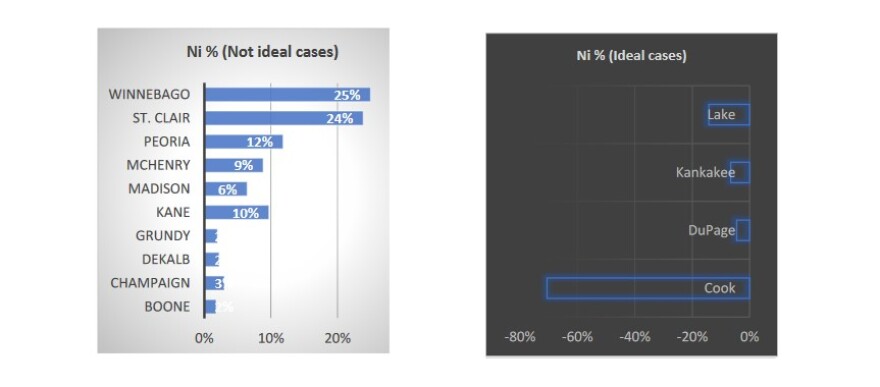We've become accustomed to daily tallies of new COVID-19 statistics in the news. But one researcher at Western Illinois University argues absolute numbers and percentages tend to give a misleading picture when comparing different communities. Tim Shelley recently discussed the "shift method" of analyzing COVID-19 data with Adee Athiyaman, a professor of public policy and economic development with WIU's Illinois Institute of Rural Affairs.
In a recent paper, Athiyaman warns absolute numbers generally overstate the growth of the virus in larger metro areas, and understate its growth in smaller communities. By contrast, he says percentages usually understate COVID-19 growth in larger regions and overstate its impact in rural areas.
The shift method neutralizes these problems by separating Illinois into metro and nonmetro areas, and benchmarking their relative changes against a calculated "growth norm."
Looking at a two-week sample of new COVID-19 cases from June 1 through June 15, counties like Cook, Lake, and DuPage performed better than expected, while Winnebago, St. Clair, and Peoria were among the worst-performing metro counties.
Athiyaman found in nonmetro counties, counties performing worse than expected, like McDonough and Morgan, were facing larger-scale outbreaks in long-term care facilities. Other counties, like Randolph in southern Illinois, performed significantly better.
But overall, Athiyaman said communities like Peoria are generally performing well in suppressing the virus over the longer run.
He said a study of unemployment data by sector and mobility data from Google during the pandemic suggests Peoria is likely on the road to a faster bounce-back economically than some similarily-sized communities, like Bloomington-Normal.
The paper was designed to provide a new method for economic development specialists as a tool to better compare and contrast a community's progress in containing COVID-19.
We’re living in unprecedented times when information changes by the minute. WCBU will continue to be here for you, keeping you up-to-date with the live, local and trusted news you need. Help ensure WCBU can continue with its in-depth and comprehensive COVID-19 coverage as the situation evolves by making a contribution.


